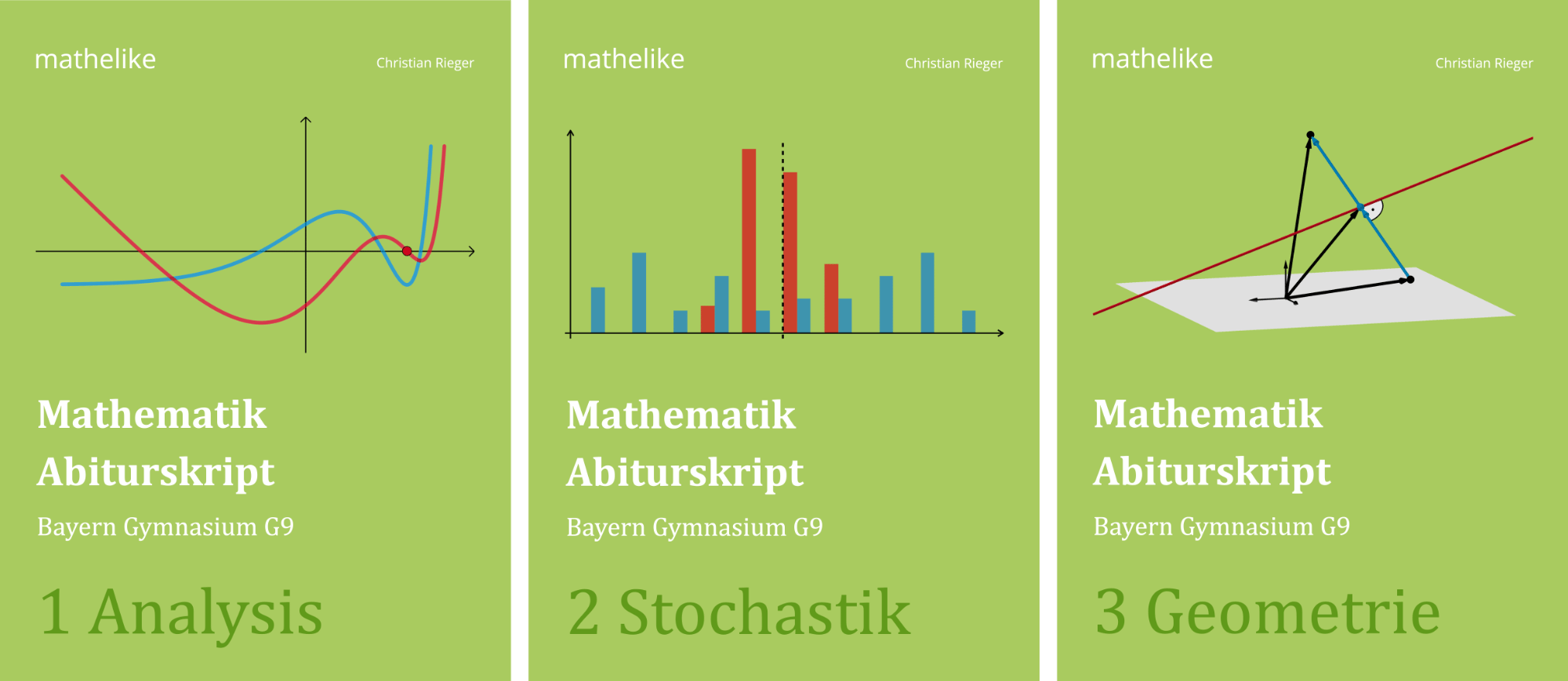Gegeben ist die Schar der Ebenen \(F_k \colon k \cdot x_2 + (k-2) \cdot x_3 = 2k\) mit \(k \in \; ]0;3[\). Jede Ebene \(F_k\) der Schar schneidet die Pyramide \(ABCDS\) in einem Dreieck \(BDQ_k\), wobei der Punkt \(Q_k\) auf der Strecke \([SC]\) liegt.
Geben Sie eine Gleichung der Ebene \(F_2\) an und zeichnen Sie in die Abbildung die Schnittfigur von \(F_2\) mit der Pyramide \(ABCDS\) ein.
(4 BE)
Lösung zu Teilaufgabe d
\(F_k \colon k \cdot x_2 + (k-2) \cdot x_3 = 2k\) mit \(k \in \; ]0;3[\)
Gleichung der Ebene \(F_2\)
Für \(\textcolor{#e9b509}{k = 2}\) ergibt sich:
\[\begin{align*} &F_{\textcolor{#e9b509}{2}}\colon \textcolor{#e9b509}{2} \cdot x_2 + (\textcolor{#e9b509}{2} - 2) \cdot x_3 = 2 \cdot \textcolor{#e9b509}{2} \\[0.8em] &F_2 \colon 2x_2 = 4 &&| : 2 \\[0.8em] &F_2\colon x_2 = 2\end{align*}\]
Die Ebene \(F_2\colon x_2 = 2\) verläuft im Abstand \(2\) parallel zur \(x_1x_3\)-Ebene (Ergänzung, nicht verlangt).
Betrachtet wird eine Ebenen \(\textcolor{#0087c1}{E \colon n_1x_1 + n_2x_2 + n_3x_3 + n_0}\) in Normalenform in Koordinatendarstellung (Koordinatenform). Die Ebenen \(E\) hat eine besondere Lage im Koordinatensystem, wenn mindestens einer der Werte von \(n_1\), \(n_2\), \(n_3\) oder \(n_0\) gleich null ist. Die \(x_1x_2\)-Ebene (grau) ist als optisches Bezugsobjekt mit dargestellt.
\(\boldsymbol{n_0 \neq 0}\) und ein Wert von \(\boldsymbol{n_1}\), \(\boldsymbol{n_2}\) oder \(\boldsymbol{n_3}\) ist \(\boldsymbol{0}\)
Ist \(n_i = 0\), so ist die Ebene \(\textcolor{#0087c1}{E}\) echt parallel zur \(x_i\)-Achse.
Beispiel: \(\textcolor{#0087c1}{E \colon 2x_2 + 2x_3 = 3}\) ist echt parallel zur \(\textcolor{#cc071e}{x_1}\)-Achse.

\(\boldsymbol{n_0 = 0}\) und ein Wert von \(\boldsymbol{n_1}\), \(\boldsymbol{n_2}\) oder \(\boldsymbol{n_3}\) ist \(\boldsymbol{0}\)
Ist \(n_i = 0\), so liegt die \(x_i\)-Achse in der Ebene \(\textcolor{#0087c1}{E}\).
Beispiel: \(\textcolor{#0087c1}{E \colon 2x_2 + 2x_3 = 0}\) enthält die \(\textcolor{#cc071e}{x_1}\)-Achse.

\(\boldsymbol{n_0 \neq 0}\) und zwei Werte von \(\boldsymbol{n_1}\), \(\boldsymbol{n_2}\) oder \(\boldsymbol{n_3}\) sind \(\boldsymbol{0}\)
Ist \(n_i = 0\) und \(n_j = 0\), so ist die Ebene \(\textcolor{#0087c1}{E}\) echt parallel zur \(x_ix_j\)-Ebene.
Beispiel: \(\textcolor{#0087c1}{E \colon x_2 = 2}\) ist echt parallel zur \(\textcolor{#cc071e}{x_1x_3}\)-Ebene.

\(\boldsymbol{n_0 = 0}\) und zwei Werte von \(\boldsymbol{n_1}\), \(\boldsymbol{n_2}\) oder \(\boldsymbol{n_3}\) sind \(\boldsymbol{0}\)
Ist \(n_i = 0\) und \(n_j = 0\), so ist die Ebene \(\textcolor{#0087c1}{E}\) identisch mit der \(x_ix_j\)-Ebene.
Beispiel: \(\textcolor{#0087c1}{E \colon 3x_2 = 0}\) ist identisch mit der \(\textcolor{#cc071e}{x_1x_3}\)-Ebene.

Schnittfigur von \(F_2\) mit der Pyramide \(ABCDS\)
![Die Schnittfigur der Ebene F₂ mit der Pyramide ABCDS ist das gleichschenklige Dreieck BDQ₂ mit der Basis [BD]](/images/stories/B2025_PT_B_G2/B2025_PT_B_G2_d_web.png)
Beschreibung (nicht verlangt): Die Schnittfigur von \(F_2\) mit der Pyramide \(ABCDS\) ist ein gleichschenkliges Dreieck mit der Basis \([BD]\). Der Eckpunkt \(Q_2\) liegt vertikal über dem Schnittpunkt der Diagonalen \([AC]\) und \([BD]\) des Drachenvierecks \(ABCD\) (Grundfläche).


